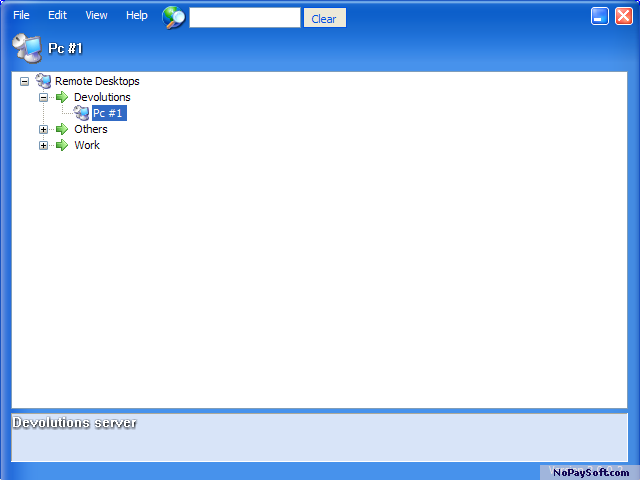
- #MICROSOFT REMOTE DESKTOP MANAGER WINDOWS 10 DOWNLOAD UPDATE#
- #MICROSOFT REMOTE DESKTOP MANAGER WINDOWS 10 DOWNLOAD WINDOWS 7#
- #MICROSOFT REMOTE DESKTOP MANAGER WINDOWS 10 DOWNLOAD FREE#
(The Windows XP version requires Windows XP Service Pack 3)Īfter downloading, if you’re running Windows XP (like I am in this example), make sure you’ve got RDC 7.
#MICROSOFT REMOTE DESKTOP MANAGER WINDOWS 10 DOWNLOAD UPDATE#
Users using Windows XP or Windows Server 2003 will need to obtain version 6 or newer of the Remote Desktop Connection client software:ĭownload details: Remote Desktop Connection 7.0 client update for Windows Vista (KB969084)ĭownload details: Remote Desktop Connection 7.0 client update for Windows XP (KB969085)
#MICROSOFT REMOTE DESKTOP MANAGER WINDOWS 10 DOWNLOAD WINDOWS 7#
Supported Operating Systems: Windows 7 Windows Server 2003 Windows Server 2008 Windows Server 2008 R2 Windows Vista It is similar to the built-in MMC Remote Desktops snap-in, but much, much more flexible.ĭownload Microsoft Remote Desktop Connection Manager (RDCMan) It is useful for managing server labs where you need regular access to each machine. Currently (as of June 2010) it’s running version 2.2, and it’s an uber-cool tool that you MUST use! RDCMan, as it’s known for short, manages multiple remote desktop connections. However, most tools that were once freeware are no longer free, and others have grown into big, bulky and sometimes uncomfortable to use applications.Įnter Microsoft Remote Desktop Connection Manager.

I’ve used some 3rd-party tools that allow saving of multiple remote desktop session shortcuts and settings. This makes management of multiple connections a bit cumbersome. In order to remember the proper credentials and settings for each connection, you’ll need to create many shortcuts to many mstsc.exe instances, each with its settings and even saved credentials. However, the mstsc.exe client is limited in capability when you need to connect to many remote machines. Updates for the client are being made available through Windows Update. So, we’ve got the capability to remotely connect to our systems, but what tool shall we use for that task? The built-in RDC client – mstsc.exe – is all we need, and it’s already installed by default on all modern versions of Windows.

In the most recent versions of Windows, it can be used easily over WAN links by deploying both regular TS-based encryption or connecting through a Terminal Server (Remote Desktop) Gateway by using SSL (similar to what’s used when connecting your Outlook client to your Exchange servers with Outlook Anywhere – or RPC over HTTPs).

It’s easy to configure, only requiring the click of a mouse.
#MICROSOFT REMOTE DESKTOP MANAGER WINDOWS 10 DOWNLOAD FREE#
Therefore, it is both free to use and provides you with many useful features that are directly related to Terminal Services. While there are some nice 3rd-party tools such as VNC and its variants, NetOP, Dameware and others, Remote Desktop Connection (also known as RDC) is already built into 99% of Windows systems. Remote connection mechanisms exist to allow us to perform these tasks. In most cases, these tasks can and should be performed remotely instead of having to actually walk over to that machine. We as IT experts, are usually required to handle the task of performing a lot of administration and configuration tasks on many servers and workstations. This tool is so cool I thought I’d take the time to tell you all about it.


 0 kommentar(er)
0 kommentar(er)
